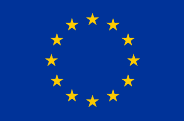
Safe non-food consumer Products in the EU and China
Hand sanitisers can be divided into two broad categories – those which offer some form of biocidal action and those which do not and are merely used to ‘clean’ the hands and perfume or moisturise them.
Products which offer or claim a biocidal action are those which have an intended function to sanitise and kill germs or viruses are considered a biocide. If it is intended just to clean, perfume or moisturise, but with a secondary action of killing germs then it will generally be considered to be a cosmetic. Products which are considered biocides are the subject of this factsheet.
This is a list of examples of common risks. However, the manufacturer has to carry out an assessment of the hand sanitiser that covers all relevant risks that may be associated with the product and actions taken to mitigate these risks where possible. A general definition of risk and its relationship to hazards can be found in the factsheet on Risk management.
Since these products are intended to perform a sanitisation function, the formulations used may present a number of different risks:
1. Chemical risks:
2. Flammability risks:
3. Other risks
Specific examples of measures taken against dangerous hand sanitisers offered for sale in the European Union are available on the Safety Gate website. Type ‘hand sanitiser’ into the free text search box (but without the quotation marks). A better understanding of mistakes made in the safety assessment of hand sanitiser, or their manufacture can help avoid their repetition.
The Biocidal Products Regulations (EU) 528/2012 lays down criteria for authorisation of biocidal products, along with their composition, labelling and other rules for placing them on the EU market. The regulatory requirements are relatively complex, but detailed guidance on the regulations is available from the European Chemicals Agency (ECHA) here.
Further guidance is available from the European Commission here.
The Cosmetics Products Regulation makes cosmetics products sold in the European Union (EU) safer by providing tight safety requirements for protecting human health; it simplifies procedures for companies and regulatory authorities in the sector and ensures that cosmetic products can freely circulate in the single market; it updates the rules to take account of the latest technical and scientific developments, including the possible use of nanomaterials; and it bans animal testing.
Sometimes it is difficult to determine whether a product is a biocide or a cosmetic, as some products can fulfil a dual function, and determining the applicable regulatory framework will depend on the form of words used to describe the product or indicate it’s intended use. Some products which appear to be biocides may in fact be regulated as cosmetics or medicinal products, and vice versa. The European Commission has therefore developed guidance for manufacturers and market surveillance authorities to assist with the correct classification of products. This can be found here.
There are no harmonised standards as such for biocides, as formulations are subject to pre-market approval by the ECHA, and therefore there is no need for a presumption of conformity. There are performance standards for manufacturers to assess the efficacy of their products however, and also agreed formulations specifically for hand sanitisers, which were permitted during the Covid 19 pandemic.
Further guidance on the applicable process for authorised formulations are available here.
However, a standard which is quite often used by manufacturers is:
EN 14476:2013+A2:2019
This standard provides certification criteria for chemical disinfectants and antiseptics, which can be used to determine the efficacy of hand sanitisation products.
While manufacturer’s need to familiarise themselves with all the laws which apply to their specific products, the following summarises some further key applicable laws:
Since biocidal hand sanitisers require authorisation before they can be placed on the EU market, much of the product specific labelling requirements will be determined during this process.
There are specific labelling requirements, based on formulation in respect of the Classification, Labelling and Packaging of Substances and Mixtures Regulation (CLP) and these will be determined by the classification for the specific authorised formulation.
The Biocides Regulations require that the product is not labelled in any way which could mislead the user (for example ‘harmless’ or ‘natural’), not be packaged so as to be attractive to children and also include the following additional information:
To ensure safety of hand sanitisers, there is also a range of general requirements to be fulfilled. These are explained in the following factsheets and need to be read in conjunction with this factsheet:
You may also visit the SPEAC ACADEMY to learn more about the EU Safety requirements.
The provided information was updated in 2022. Please note that some of the provided information could change during possible subsequent revisions of legislation, standards, and guidance documents. For any updates of official information on the EU product safety rules, please follow the Link to the webpage of the European Commission.
This document was produced with the financial support of the European Union. Its contents are the sole responsibility of SPEAC project and do not necessarily reflect the views of the European Union.

This website was created and maintained with the financial support of the European Union. Its contents are the sole responsibility of SPEAC project and do not necessarily reflect the views of the European Union.